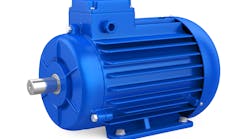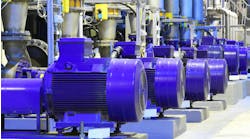The plant has an incredibly complex line that makes an incredibly profitable product. The line runs three shifts on five days per week plus two weekend shifts; demand is such that every unit produced is sold. For this product to stay in demand, the defect rate must be extremely low. Thus, operators can stop the line at any time for any reason.
Between the complexity and the quality focus, the line stops a few times per day; sometimes because something breaks, and sometimes because an operator perceives a defect occurring at some stage. With each shutdown, operators must clear any work in progress. It creates scrap, but more importantly, it takes time, which means fewer units are produced.
The sales team factored this all in and (with the production team) determined an acceptable number of shutdowns based on the expected average shutdown duration to get an acceptable total downtime number. In any given week, total downtime should be at or below this number.
But there’s a problem. A single motor drives the main conveyor for this system. It often will not start for up to 30 minutes after the downtime reason is resolved, which puts the total acceptable downtime past the point where the line can meet demand. And some revenue is lost forever.
You’ve been tasked with solving this problem with this motor. What should you do?
Monitor temperature
The 30-minute delay indicates the overload protection for this motor is thermal rather than current-sensing. Start by monitoring the temperature where the thermal device monitors it. For example, install a thermocouple next to the sensor of the thermal relay (if it’s what’s being used). Use the thermocouple output as an input to a temperature-logging display device. Or if the system is under PLC control, then run it to a PLC module that can accept the input.
The point of monitoring and recording the temperature is so you can determine if the thermal device is correct for this application. If it is not correct, you may solve the problem by replacing or adjusting the device. If the motor has an integrated thermal device you cannot easily access, either have a motor shop replace it or replace the whole motor and use an external overload device (per 430, Part III).
While the instrument is collecting the data, examine where the motor lives. Drive motors are often subjected to being jammed into tight spaces, meaning restricted airflow. If the motor is taking too long between restart attempts, it also may be too hot while running. You can attack both problems by ducting in cooling air with a forced draft.
Another way to improve this situation is to replace this motor with an energy-efficient one that includes a higher insulation temperature rating. You could use a higher-rated thermal device to protect it and the required cooling time between starts would be substantially reduced.
Power quality problems could be causing the motor to run hot and, thus, take longer to cool. Check first for voltage imbalance. Since this line is critical, try to get the imbalance down to half a percent instead of the often recommended 2% target. Correcting for low power factor at the motor is another way to reduce the buildup of heat. If the motor has a variable-frequency drive (VFD) that is not power factor-corrected, replace it with one that is. If the motor does not include a VFD or soft starter, install one or the other so you eliminate those heat-generating, across-the-line starts.
Lubrication and bonding
Two other reasons for motors to run hotter than they should include incorrect lubrication and incorrect bonding. Take a close look at how motor lubrication has been done; find out who has been doing this job and have the person physically walk you through exactly how they did it the last time. This is an important distinction versus asking him how he does it. If somebody asks you how to do something, you tend to summarize and explain it in generic terms. But if somebody asks you to walk through what you did, it’s a very different effect as details will come out.
If, for example, the worker didn’t ensure grease compatibility and didn’t open the drain plug, you have found a training deficiency that needs to be corrected before anyone with a grease gun gets within 10 feet of that motor.
As for the bonding, if it’s incorrect, then undesired current will be flowing through the motor to try to get back to the source. While this typically trashes the bearings more than the windings, it’s still adding to the total heat of the motor. So, take the time to methodically ensure the mechanical integrity and continuity of the equipment bonding jumpers and an equipment grounding conductor.
Checking the aforementioned will be a good start. Other issues such as misalignment or gearbox lubrication also might be adding to the restart time. Since this motor is so critical, don’t stop once you find a problem. It may not be “the” problem; there may be several problems, and each might be in a different stage of severity. Methodically go through the motor system to find and correct all problems.




